#react carousel library
Explore tagged Tumblr posts
Text
Top 11 React Carousel Libraries for Stunning UI/UX!

Improve your next web development project with the best React Carousel Component Libraries. Improve user experience with dynamic, interactive carousels tailored to your needs. Get expert guidance to choose the perfect library for your project!
#react carousel#React Carousel Component#react carousel library#reactjs carousel#carousel for react#Carousel Components#carousel react js#react slider carousel
1 note
·
View note
Text
Why React and PHP Work Well Together
When developing modern web applications, combining React and PHP is often a winning strategy. These two technologies complement each other, allowing developers to build dynamic, fast, and efficient web applications. Let’s explore why React and PHP work well together.
What Is React?
React is a JavaScript library used for building user interfaces, especially for single-page applications. It focuses on creating reusable UI components, making front-end development faster and more organized. React is known for its speed and ability to create highly interactive user experiences.
What Is PHP?
PHP is a server-side scripting language that powers many websites and applications. It’s widely used to handle back-end logic, manage databases, and deliver content to web pages. PHP is especially popular for its simplicity and integration with databases like MySQL.
Why Use React and PHP Together?
React and PHP have distinct roles in web development. Here’s why they work well together:
1. Separation of Front-End and Back-End
React handles the front-end, ensuring a seamless and interactive user experience. PHP works in the back-end, managing data processing, database interactions, and business logic. This separation allows developers to build robust, scalable applications.
2. Dynamic Content Delivery
PHP can generate dynamic content on the server side, such as user-specific data. React can then render this data on the front-end without refreshing the entire page, thanks to its virtual DOM.
3. API Integration
React communicates with PHP through APIs. PHP can expose RESTful APIs, which React uses to fetch and display data. This integration allows for a clear distinction between front-end and back-end responsibilities.
4. Scalability
Using React for the front-end ensures that your application is highly responsive, while PHP's robust server-side capabilities support scalability. Together, they handle growing user demands efficiently.
5. Flexibility in Deployment
React and PHP can be deployed independently. For instance, React can run on a different server from PHP, enabling flexible and modular development.
Benefits of Combining React and PHP
1. Improved User Experience
React enables fast and interactive user interfaces, while PHP processes data quickly in the back-end. This combination ensures a smooth and responsive experience for users.
2. Reusability
React components can be reused across the application, reducing development time. PHP’s functions and classes can also be reused, making the development process efficient.
3. Cost-Effectiveness
Both React and PHP are open-source technologies, which means no licensing costs. They also have large communities, providing plenty of free resources and tools for developers.
4. Easier Debugging
React's developer tools make debugging front-end code simple, while PHP’s error reporting features help identify back-end issues quickly.
Example Use Case
Consider an e-commerce website:
React: Creates a visually appealing and interactive user interface, such as product carousels, filters, and dynamic shopping carts.
PHP: Handles tasks like user authentication, order processing, and database management.
This division ensures the site is fast, scalable, and user-friendly.
Final Thoughts
Combining React and PHP is a smart choice for building modern, dynamic, and scalable web applications. React’s ability to create seamless user interfaces, paired with PHP’s robust back-end capabilities, ensures an efficient and high-performing application. Whether you’re building an e-commerce platform, a content management system, or any custom web solution, this duo can help you achieve your goals effectively.
If you're ready to take your web application to the next level, it’s time to hire React developers who can expertly integrate these technologies and deliver a top-notch solution tailored to your needs.
0 notes
Text
What is the Difference Between a React Component and a WordPress Gutenberg Block?
In the world of web development, there are countless tools and technologies at our disposal, each designed to solve specific problems or enhance certain aspects of the user experience. Two such powerful tools are React components and WordPress Gutenberg blocks. While they may seem similar at first glance, especially since both can be used to build dynamic and interactive content, their purposes, structures, and uses differ significantly. Let’s dive into their differences and understand how they fit into the broader picture of web development.

The Journey Begins:
Understanding React Components
Imagine you’re an artist, and you have a collection of brushes, each designed for a specific stroke or effect. In the world of front-end development, React components are those brushes. React, a JavaScript library developed by Facebook, is all about building user interfaces, particularly for single-page applications (SPAs). Its components are the reusable, isolated pieces of code that serve as the building blocks of an application.
Each React component is like a self-contained module that controls its own structure, style, and behavior. These components can manage their own state and lifecycle, allowing developers to create complex user interfaces by simply combining different components like Lego blocks. Whether it’s a button, a form, or an entire section of a page, React components can handle it all.
For instance, consider building a web application that requires a dynamic list of items where users can add, remove, or edit entries. React components excel in such scenarios, where the content is dynamic, and user interactions dictate the behavior of the application. The beauty of React lies in its ability to update the user interface efficiently, re-rendering only the components that have changed, which results in a seamless and fast user experience.
The Gutenberg Adventure: Entering the WordPress World
Now, let’s switch gears and step into the vast ecosystem of WordPress, the most popular content management system (CMS) globally. When WordPress introduced the Gutenberg editor, it marked a significant shift in how content was created and managed on the platform. Gutenberg blocks are the foundational elements of this new editor, enabling users to build rich content layouts with ease.
Gutenberg blocks are designed with content creators in mind. Each block represents a piece of content — be it a paragraph, image, heading, or even a more complex widget like a product carousel. Unlike React components, which are primarily used in custom web applications, Gutenberg blocks are tightly integrated with WordPress, allowing non-developers to build and manage content visually.
For example, if you’re running an online store with WooCommerce, Gutenberg blocks make it easy to add product galleries, testimonials, or featured product sections to your pages. With the drag-and-drop interface, you can arrange these blocks to create a compelling layout without writing a single line of code.
The Crossroads:
React vs. Gutenberg Blocks
At this point, you might be wondering where the line is drawn between React components and Gutenberg blocks. Here’s where the distinction becomes clear:
Purpose and Usage:
React Components: Designed for building complex, interactive web applications. They are ideal for projects that require dynamic content and user interaction, often beyond the scope of traditional content management systems.
Gutenberg Blocks: Built specifically for WordPress, these blocks simplify content creation for non-technical users. They are perfect for assembling and managing content on WordPress sites, especially when customization and ease of use are priorities.
2. Development Context:
. React Components: React is a library, meaning you can use its components in various environments, not just WordPress. This flexibility makes it a go-to choice for developers building SPAs, dashboards, or any application where performance and scalability are key concerns.
. Gutenberg Blocks: While Gutenberg blocks can be customized using React (as Gutenberg itself is built with React), they are inherently tied to WordPress. Their primary purpose is to empower content creators within the WordPress ecosystem, providing a visual and intuitive way to manage site content.
3. Reusability and Integration:
React Components: Components are highly reusable across different parts of an application. They can also be shared across projects, thanks to libraries like npm. This makes them ideal for building large-scale applications where consistency and code reuse are important.
Gutenberg Blocks: Blocks are reusable within the WordPress context, but their reusability is more about consistency in content layout rather than code. They are integrated directly into the WordPress editor, making them accessible to anyone managing content on a WordPress site.
The Conclusion:
Choosing the Right Tool for the Job
In the grand scheme of web development, both React components and Gutenberg blocks play crucial roles. React components are your best bet when building dynamic web applications where performance, scalability, and user interaction are paramount. On the other hand, Gutenberg blocks shine in the WordPress realm, where content management and user-friendly interfaces are the focus.
As we navigate the ever-evolving landscape of web development, it’s essential to understand these tools’ unique strengths and how they can be leveraged to create compelling, user-centric digital experiences.
And speaking of leveraging the best tools for the job, if you’re looking to build web applications or websites using ReactJS and WordPress, including WooCommerce, MoizWordPress has the expertise to bring your vision to life. Whether it’s a custom application that requires intricate React components or a beautifully crafted WordPress site with Gutenberg blocks, MoizWordPress can help you create something truly remarkable.
With the right team and the right tools, the possibilities are endless.
Whether you’re an artist with a brush or a developer with a component, the digital canvas is yours to shape.
#design#business#seoWork#websiteDesign#websiteDevelopment#website#websitedevelopment#digitalMarketing#seoServices#seoexecutive#increaseRanking#increaseTraffic#WebDesignTrends#UXDesign#DigitalExperience#WebsiteDevelopment#UserInterface#TechTrends#MoizWordpress#reactjs#react hooks
1 note
·
View note
Text
How to Integrate a Carousel into React Applications
In this article, I continue building a React website with the help of my AI assistant! Learn how to add a Carousel to your projects with the React Responsive Carousel library. Easier than anticipated! Introduction In this article, I will continue covering React concepts I am learning through pair programming with AI to create a […] The post How to Integrate a Carousel into React Applications appeared first on TECH - WEB DEVELOPMENT NEWS. https://tech-webdevelopment.news-6.com/how-to-integrate-a-carousel-into-react-applications/
0 notes
Text
Nancy Drew and Education
So apparently the Clue Crew is full of teachers? Who knew. Well, as a former homeschooled student, current teacher, and (hopefully) future homeschooling parent/teacher I have been planning on integrating the games into lessons for a long time. Below the cut I have just a few of my many ideas (some more fleshed out than others). Feel free to use, adapt, or add your own!
SCK:
- Braille
o How blind/vision impaired people navigate the world
§ How we can make it more accessible for them
o How do braille books and printers work
- ASL
o Memorizing the alphabet and basic signs
§ Build up fluency
o How HOH/deaf people navigate the world
§ How we can make it more accessible for them
o Connections of ASL to other signed languages
§ French Sign Language versus British Sign Language
- Dangers of gas leaks
o What to do if you smell or hear gas
- Inequalities between mens and womens sporting opportunities
o See Women’s Soccer
- What are performance enhancing drugs
o What is the difference between #steroids and the steroids your doctor might prescribe
- How drug running is a gateway crime
- Why blackmailing people isn’t good
- More reasons to never move to Florida
- Why you shouldn’t go to an actual high school part one
STFD:
- Television in NYC
o Soap Operas
o How television sets work
o Role of director
o Teleprompters
o Props
o Agents
- Theatre in NY
o Broadway
§ Learn a show
o Carnegie Hall
- Dangers in the ways we obsess over celebrities
o Paparazzi
o Stalkers
o Respecting privacy
- NY taxi system
- NY regional accents
- NY as a center for immigration – salad bowl
o Ellis Island
- History of NYC
o Geography of NYC
- Typewriters
- Towers of Hanoi
- Encoding
- How to make chocolates (with or without poison)
- Read along:
o New York the Novel (Edward Rutherford)
o The Power Broker
o All of a Kind Family
MHM:
- San Francisco Gold Rush
- Earthquake and Fires in San Fran
- Golden Gate Bridge
- Angel Island
o Asian (Chinese) Immigration to the USA
- Chinese Zodiac
- Fortune telling (and why it’s not okay)
- Bed and Breakfasts
- San Francisco today
o Technology boom
o Overpriced everything
§ How this hurts established residents
§ Homelessness in San Fran
- Bandits in the American West
- Hauntings in American buildings
- How to remove and install tile
- Renovations – refurbish something
- Antiques
o Visit an antique shop
- Importance of fire safety
- How to install lighting fixtures properly
- How to fix a dumbwaiter
o How not to be a dumb waiter
- Tangrams
- What is the Victorian period
o Significance of Queen Victoria
- Read Along:
o Little Brother
o Paper Son: Lee’s Journey to America
o Angel Island Gateway to Golden Mountain
TRT:
- The French Revolution
o Marie Antoinette
o Women and the French Revolution
o Worldwide effects of the Revolution
o Historians of the French Revolution
- Writing history
o How we can focus on different events in history, how we can be sympathetic to certain people, how we can fulfill different spaces in the historical narrative, criticism of history as a field, entering history as a field
- Wisconsin Dairy industry
- Alarm systems and how they work
- Fingerprinting
- Elevator safety
- Ski lifts
o Skiing
- Vandalism
- Taking care of libraries
- Latitude and longitude
- Keeping records of good events and bad events
o Nothing you do will ever stop me from loving you
- Some people keep different sleep schedules
- Journalism
- Making translations
- Why France has different holidays – to keep the ski lodges from getting too full
FIN:
- History of theatre spaces
- Use of film at theatres
- Magicians
o Houdini
o Learn a ‘magic’ trick
- Library of Congress
- Demolition – wrecking balls
o What’s involved
- Plaster casts
- Historic register of buildings
o Visit a local historic building
- Price of concessions and movie tickets today
- Nickelodeons
- Celebrity stunts for attention from press
o Celebrity endorsements
- Jazz music
o Dancing
- Kidnapping stories
o What to do if someone tries to grab you
- Rubber vs. electricity
- Art/artists of the 20s
SSH:
- Numbering systems (particularly ones not based on 10)
- Cultures of South America
o Maya
§ Cultural understandings
§ Connections to what appears at Beech Hill
o Aztec
o Inca
- Myths of lesser civilizations because of European preconceptions
- Why do countries have consulates/embassies in other countries
- What is amnesia and other medical memory issues
- Provenance and why its important part one
- Roles and responsibilities within a museum
o Visit a museum
o How to be critical of a museum and how knowledge is presented to you
- Modern art
o Make your own
o Visit a modern art museum
- Periodic Table of Elements
- Positive and negative molds for casting
DOG:
- Prohibition
o Speakeasys
o Amendments to constitution
o Drinking age restrictions
§ Comparison of USA to European countries
o Connections to modern drug policies
- Recognizing and photographing local birds
- Dangers in the forest – ticks and other pests
- Why water sources are important
o Flint water crisis
- Visit a state park
o Importance of maintaining public land
- Alcatraz
- How to care for dogs
- Noise pollution
o Light pollution
CAR:
- History of carousels
o Visit a carousel
- Lathes
- Harmonicas
- Band organs
- Writing messages with lemon juice and other hidden inks
- How to iron
o How not to iron
- How to make a sundae
- How amusement park rides are designed
- Soldering
- What is parole
o Welcoming those who have been in prison back to society
o Problems with the American prison system
§ How it disproportionately affects minority groups
o What can be done in prison reform
o Abuses in prison
o Making mental and spiritual help and guidance more available
o Making sanitary products available
o Prison for profit hurts everybody except the prison owner
o Educational opportunities for those in prison
o More half-way help
o Juvenile sentencing reform – more out of system help
o Respecting humanity of prisoners
o Ending the death penalty
- Depression
o How to get help
o How to help others
o Dealing with loss
DDI:
- Native peoples of the Pacific Northwest
- Orcas and other whales
o Whaling industry in Northwest and Northeast
o Things whale products were used for
o Visit natural history museum with whale exhibition
- Visit an aquarium with a good reputation
o Problems with places that do not take care of their sea life – particularly large sea life like whales
- What is a chowder and how is it made
o Try or make chowder
- Crabs
o Restrictions on different types of crabs – what type is local
o Try a crab dish
- Importance of different knots
o Get some rope and learn how to tie different knots
- Know the NATO alphabet and letter flags
- Boating knowledge
o Go on a boating trip – know the port and starboard sides
- Learn how to kayak
- Try to learn how to skip rocks
- Visit a lighthouse
o Importance and histories of lighthouses
- Smuggling – what is it and why does it happen
- Shanghaiing
- Chess
SHA:
- The continuous oppression and mistreatment of Native Americans
o From Mayflower to Pocahontas to Trail of Tears to Dakota to DAPL to Reservations to food deserts to voting rights to much much more
§ How to support current Native voices and concerns
o Why Native Americans are not a costume
o “Possession” of Native American objects and land
§ Arrowheads and native jewelry
o Broad overview of regional Native American groups – using their own voices
§ Special focus on local Native American groups
· Is there a local museum/educational resource that is either Native created or known for respecting Native voices
o Current Native Americans of note (ex: politicians, activists, artists)
o While the previous focuses on Native Americans in the modern day USA – also discuss First Nations from Canada and Native Groups from more southern areas
- Why temperature and pan matters when baking (show what happens in the oven when it goes wrong)
- Magnets and how different metals react differently to magnets
- How to take care of a horse and other farm animals
o Visit a local farm
o Try horse-riding
- Dangers of rattle snakes and scorpions
- Lassos and how to use them
- Legends of outlaws in the American West
- Ghost towns
- Flower stitches when knitting/crocheting
- Petrified wood
- How to make a campfire
- Picking fruits and veggies when they are ready
- Flower language
- Read Along:
o Native American folk tales
o Motorcycles and Sweetgrass
o Gone Away Lake
o Black Beauty?
CUR:
- Where are the moors
- Different regional accents within the United Kingdom
- British foods
- Latin
o Learn fun phrases and prayers
- Ancestry and genealogy
o Map your own family tree and recognize family crests
o How adoption has historically been a binding and irrefutable concept for lineage
o Find places your family lived
o Leaving a history for your descendants
§ Write a story book for them
o British Royal Family
§ Why incest is bad
- Parrots and their intelligence
- Secret passages in old buildings
- Alchemy
o Connections to modern understandings of science
o Historical understandings of elements
- Astrological signs
- Witch trials
- Legends of lycanthropy and other monsters
- Importance of not taking other peoples medicines
- Runic alphabet
- Feeding your pets a healthy diet
- Typing practice
- How to embrace the idea that home taught students are evil geniuses
- Forges and melting points of different metals
- Carnivorous plants
- Succulents
- Constellations in different places
- Read Along:
o The Secret Garden
o The London Eye Mystery
o Beastly
CLK:
- Great Depression
o Causes and effects
o Who was hurt
o Who was not hurt
o Areas of America
§ Dust bowl
o Famous people and literature
o Homelessness and poverty
§ Bread lines
§ Soup kitchens
§ Anti-homelessness architecture
§ Connections to mental illness and veterans
§ How we can help those who do not have homes today
- Early Telephones
- Shakespeare
- History of Nancy Drew
o Mildred Wirt Benson
o Edward Stratemeyer
- Fishing – why different fish respond to different bait
- Orphanages in the early 20th century
- Gas prices and accessibility of cars through time
- How to make pie
- What is jurisdiction and what is significant about crossing state lines
- How do banks work
o Safety deposit boxes
- Identify theft
- How to use a sewing machine
o Sew an item of clothing
- Mini golf – why and what
- Mirrors and their usefulness
- Stamp collections
-
- Radios and call signs
o Comparison to modern internet forms
- Telegrams
- Read along:
o Shakespeare
§ Midsummer Night’s Dream
§ Others
o Pollyanna
o Rebecca of Sunnybrook Farm
o The Grapes of Wrath
TRN:
- Trains
o Steam trains
o Visit a train museum
o Take a train ride (if not a normal event)
o Importance of transcontinental railway
o Trains around the USA today
o Trains around the world (TGV, bullet train)
- Abraham Lincoln
- Mark Twain
- How to make a good burger (you leave off the PB&J)
- Slugs
- Periodic Table of Elements – abbreviations
- Gemstones
- History of Mining
o England (Newcastle upon Tyne)
o American West
o Appalachia
o Company Store
o Health issues for miners
o Danger of mines
o Current issues for mining
- Dancing the Hurley Burley
- People who collect creepy dolls
o History of porcelain dolls
- Embroidery
o How to
o Patterns/symbols
- General Stores in the American West
o Sears
- How to make taffy
- Find a well maintained and beautiful tomb and research who is entombed
- Focusing light through a magnifying glass can start a fire
- Read Along:
o Murder on the Orient Express
o Mark Twain books
DAN:
- All lessons in French
- How using different ingredients and different amounts of ingredients can affect the outcome of your cookies
- Paris métro
o History
o How to read/follow a métro map
o RER
- Montmartre and other Parisian neighbourhoods
- History of Île de la France and Square de Vert Galant Parc and Pont Neuf
- WWII and the French Resistance
o Cross of Lorraine
o Vichy France
o Abuses of the French gov’t in this period
- Paris and the fashion world
- Beauty standards and the rejection of natural beauty by society
o Dangers of weight and figure standards
o You are beautiful as you are
- Catacombs of Paris
- Famous French Dishes (from this region)
o Or Bretagne since I know and like them better
- The French Café
- Moulin in France
- Tea and how hot leaf water can taste so bad but still be good for you
- Buildings of Baron Haussmann
- Paris History
- Decoders
- Importance of vitraux historically, culturally, and religiously
- Read Along:
o Little Kids
§ Madeline
§ Babar
§ Petit Ours
§ Plume
o High School
§ Hunchback of Notre Dame
§ Les Mis
§ Dale Van Kley
CRE:
- History of Hawai’i and her native people
o How the USA screwed them over and continues to do so
§ Land colonizing today
o Listen to voices from Native Peoples
- Pearl Harbor
o USS Arizona
- Native myths and legends
- Local flora and fauna
- Surfing
- How to make bead necklaces
- Snorkeling
- Entomology
o Find some local bugs and identify and observe them
- Horticulture
o See if you can graft something
o Watch a carnation placed in water with food dye
o Regrow a fruit or veggie from the leftovers
- Go looking for seashells – see how many complete shells you can find
- Be aware of pesticides and the dangers they offer
o Dangers of organic food too
- Make something with pineapple in it
- Fishing – different kinds of native fish
- Volcanos
- Hula
ICE:
- Wolf sanctuaries – respecting wildlife and their place in the wild and not the domestic
o What to do if you see a wolf in the real world
- Fur trapping in Canada history
- Regions and Capitols of Canada
o Visit Canada?
- How the Canadian government works
- Use of French language in Canada
o Unique features of Canadian French
- Ice fishing
- How to cook omelets, salmon, etc.
o How to not add paprika cause like ew
- Fossils
- Radiation
o Marie Curie
- How to be a good maid
- Snowballs/ice balls
- Ice skating
- Winter weather safety
- Avalanches
- Saunas
- Birthmarks
- Fax machines
- How to not lie about bird watching
- Frozen water safety
- Modern offenses against First Nations by Canadian Government
CRY:
- Culture of the Arawak and Caraïbe
o Voodoo
- Mardi Gras in New Orleans
- Hurricane Katrina and aftermath
- French Influence
- Eyes and their parts and functions
- Teeth and their parts and functions
- Alligators in the Southern USA and how they are dangerous pests
- Graveyards/cemeteries and how to be comfortable in them
o Modern burial practices
o Why are they above ground in Louisiana?
o Places where they are running out of space for the dead
o Historic violations of final resting places
- Ventriloquism
- Lizards and how to care for them
- Rube Goldberg machines
- Curio shops
- Crystal Skulls
VEN:
- International crime
- Organized crime
- Scopa
- Italian basics
o Learn an Italian aria
- Italian food
o Not just spaghetti
- History of Venice
o Current issues in Venice
- Carrier pigeons
- Micro-dots
- “Observing the architecture”
- Try to make gelato (or just get gelato, either way you get gelato)
- Disguising yourself – put on an outfit and try to get me to not recognize you
- Picking locks
- Secret codes
- �� Solfege
o With hand signs
o Learn a song in solfege
- Carnivale
- Learn how the sausage gets made
o How to deal with food poisoning
- How to secure your living space against burglars
o Glass breaks, motion sensors, keypads, magnets, and more
- Read Along:
o Heist Society
o The Prince
o Merchant of Venice
HAU:
- Irish lessons (as much of this in Irish as possible)
o Why the Irish language is important
- Geography of Ireland
o Provinces and counties
- Irish names
- Why Ireland has disliked and should dislike the UK
o Historically
o Famine
§ Emmigration
o Easter Rising
o Troubles
o Present-Day
- Importance of alcohol in Ireland
o Uisce beatha
o Guinness
§ Guinness world records
- Irish music
o Irish instruments
o Learn some Rebel songs
- Ogham runes
- Irish foods
o Something with lamb, who cares what
- Don’t use friends for land development
- Bogs
- Chemical Reactions
- Rockets
- Inventions and secrecy during WWII
- Religion in Ireland
o Pagan traditions
o Christianity
o Catholic/Protestant tensions
- Irish wedding traditions
- How printing presses work
- Irish castles
- Sheep sheering/raising sheep
- Irish legends
o Fae
o Leprechauns
- Don’t drive and talk on the phone
RAN:
- Why blackface is problematic? (the fact that this needs to be said is problematic in and of itself)
- Scuba diving
- Sailing
- Bermuda Triangle
- Bats
- Primates and their intelligence
o Problems with animal research
o Koko
o Jane Goodall
- Island resort culture
- Metal detectors
- Pirates
o And the Caribbean
o Their abuses
o Different kinds
o Modern day pirates
- How do walkie-talkies work
- US mistreatment of island territories
- Read Along:
o Bloody Jack (Meyer)
WAC:
- Edgar Allan Poe
o Stories
o Baltimore
- Piano
- Victorian Dining traditions
o How to set a place for fancy dining
o How to fold napkins
o Table manners
o How to serve someone at a fancy dinner
o How courses might work
o How to use your silverware
- Why you shouldn’t go to an actual high school part two
o Just fyi – that’s not how uniforms work
§ Have a school inspired dress code for a week
- Bullying and why you absolutely will not be a bully
o How to respond to bullying
o Importance of talking to adults and counseling
- Logic puzzles
- Research the founding of a local school
- Stringed Instruments
- Plagiarism
o Turnitin
- Making sandwiches – like a good deli style sandwich
- Photography scavenger hunt – make a digital (or physical) yearbook
- Squirrels
- Orthographic projection
- DNA/RNA
- Saving every major project on three different thumb drives
- Getting along with roommates
- States and Capitals
o Countries and capitals of the world
TOT:
- Tornados
o Technology used to observe tornados
- Meteorology
- Prairie dogs
- Life on the great plains
- Great Plains Native Americans
- Small towns in the Midwest honestly be like that
- Defensive driving
- Make a disaster kit
- Know what to do in various natural emergency situations
o What is the local alert protocol
o What do local authorities recommend
- How to maintain and fix a car
- How to fix a broken device
- What is tenure
- How to budget
o Go to the grocery store on a strict budget (however much you come in under budget is your candy budget)
- Read Along:
o Little House
SAW:
- Basic Japanese phrases
o Learn to count
o Writing in Japanese
- Sudoku, nonograms, renograms
- Japanese ghost legends
- Japanese culture
o Tourism
§ Ryokans
o Space – everything small
o Politeness/formalities
o Hot springs/baths
o Tatami and paper walls
- Japanese cultural dress
o Kimonos
o Lolita? Fashion
- Japanese names
o Last name first
o How to address others in Japan
- Martial Arts
o Ninjutsu
§ Traditional tools
- Japanese tea ceremony
- Schools in Japan
- Teaching English as a foreign language
- Japanese subway/train system
- Pachinko and Japanese gaming
- Japanese vending machines
- Robotic animals
- Bento
- Japanese foods
- Origami
- How to fake a haunting
CAP:
- Basic German phrases
o How to make a German word
o Connections of German to English
- German food favourites
o Especially cakes
- Storytelling as a cultural entity
o How memory has worked differently in different times
- Glass blowing
- How castles provided for the local community
- Bavaria in Germany
o Cultural dress
- Glockenspiel
- How to make board games
- Monster stories of central Europe
- How to monitor security camera remotely
- Read Along:
o Heidi
ASH:
- Arson
o Watching how different accelerants burn a piece of paper
- All politicians are at least somewhat self-serving
o But write a letter to a local politician anyway
§ Different ways to contact elected officials, and why some don’t work
- How to make ice cream
- How a police investigation works
o Problems with police departments around the world – specifically USA
o Ways that police work unfairly targets minorities
§ If Nancy is innocent how many others are
- How to use matches and lighters safely
- Why you should not return to the scene of a crime – particularly a fire
- Making sure smoke detectors work properly and the system is connected
o We might not go to school but fire drills are still important
- What is a mass spectrometer
- Who to call if you’ve been arrested
- What to do if you get pulled over
- How the media can skew the truth and make their own narratives
- Sound mixing
- Be careful with what you say/post/record
o Keep receipts and clarify when possible
TMB:
- What not to do at an archaeological site
- Ancient Egyptian History
o Pantheon, notable figures, relevant events
o Pyramids, sphinx
o Pharaohs
- Modern Egypt
o Arabic alphabet
- History of archaeological digs in Egypt
o Why they’ve been problematic
- Dangers of the tombs
- Mummys
o How they are put together
- Tomb raiders
- Importance of water in the desert
- How to piece together a broken artifact
- How to gently brush off an artifact
- There is no such thing as a dictionary for ancient Egyptian
- Aliens did not build the pyramids
- Senet
- Desert life safety
- How mirrors can be used to light a room
- Read Along
o Rick Riordan
DED:
- Nikola Tesla
o All his fun stuff
o Tesla Coils
- 3-D printing
- Gummy fingerprints
- Faraday Cage
- Basic electric concepts
o How to build a circuit board
- Chemical safety
- How a lab might work
- Valuing different skills within academia
- Ultraviolet light
- How motorcycles work
- Freelance photography
- How to use academic databases
GTH:
- Slavery in the United States
o Origins
o ‘End’
o Civil War
o The connection to “southern culture”
o Continued abuses of Black people in America
§ Importance of recognizing Black voices and what they are saying
§ Listening even when it’s uncomfortable
§ Checking privilege when you have it
o Jim Crow Laws
- Plantations
- Gone With the Wind
o The good and the bad
- Civil War spies – female
- Carbon monoxide poisoning
- Burned out houses are not a safe space
- Do not go digging through people’s coffins – rest in PEACE
- Understanding that your family can be flawed
- If you don’t want to get married, if you’re not happy in a relationship, end it
- When a member of your family is sick you take care of them
- Make a will, just in case your cousin kills you
- Bachelor and bachelorette parties should feature activities that everyone is comfortable with
- Read Along:
o My Last Skirt: The Story of Jennie Hodgers, Union Soldier
SPY:
- Scotland and their identity
o Celtic Nations
o Independent Scotland
o Call a Scottish person
- Unicorns and other mythical creatures in Scotland
- Scottish food
o The appetizing parts
- History of spies
- Biowarfare
o Code Orange
o Other teenage stories dealing with anthrax
o Current events and concerns
o Historical biowarfare (smallpox blankets)
- Ziplining
- Archery
- How to bug someone
- Tartans and plaids
o Kilts
- Augmented Reality Glasses
- Record players
- How to reset a circuit breaker
- Read Along:
o Gallagher Girls
o Code Orange
o Little House (Martha)
o Little Brother (Doctorow)
MED:
- Don’t meet your heroes
- New Zealand
o Maori culture
- Survivor style game shows and realism
- I’m not saying Aliens can’t exist, I’m saying they def aren’t involved here
- Kayaking
- Submarines and what they can do
- Turtles
- Earthquakes
- Be careful with rope bridges
LIE:
- Provenance and why it’s important part two
- Greek art and how it was originally painted vibrantly
o Abuses of Greek art through the ages
- The British Museum and the issues with that
- Greek pantheon
o Legends and notable figures
o Religious traditions
- Iliad and Odyssey
- Art forgery
- How to fire clay pots and pottery
- Memorizing lines for a play
o Staging for a play
o Role of a director
- Theatre
o Lights
o Curtains
o Fly system
o Sound
- Greek alphabet
- Historical importance of the Greek language and culture
o Alexander the Great and Hellenization
- Olympics
o Historic and modern
- Greece and the European Union
- Make something with pomegranates
- Read Along:
o Iliad
o Odyssey
o The Thief
o Percy Jackson
SEA:
- Iceland
o Culture
§ Naming traditions
o Language
o Music
o Food
- Shipbuilding
o Historic and modern ships
- Ice caving
- Northern Lights
- Tides
- Snowmobiling
- Poetry
- What is xenophobia
MID:
- Some games just shouldn’t be made
- American witch trials
o What actually went down
o Misconceptions
- Treating people with albinism as real people
- Arson is bad
- Herbal remedies and how they can interfere with modern medicine
- Witchcraft and how not to
- Salem MA
- Ignorance promotes fear and hatred so we do our best to learn about others
37 notes
·
View notes
Text
Swiper carousel unpkg

#Swiper carousel unpkg free
From version 2.4.0, it requires Swiper ver >= 5.0.Find more info about Swiper custom build HERE.swiperswipeslidertouchiosmobilecordovaphonegapappframeworkframework7carousel. You can also use Swiper's original params too. Most modern mobile touch slider and framework with hardware accelerated.If you want to use Swiper custom build to reduce bundle size, you need to use extra props below. Swiper is not compatible with all platforms, it is a modern touch slider which is focused only on modern apps/platforms to bring the best experience and simplicity. Designed mostly for iOS, but also works great on latest Android, Windows Phone 8 and modern Desktop browsers. If you prefer CDN, just make sure constructor Swiper is defined in browser global environment. It is intended to be used in mobile websites, mobile web apps, and mobile native/hybrid apps. I wish to introduce Swiper in a project I am following using React v17.0.2 + Next.js v11.1.0 + Webpack v5.43.0 and, copying the basic docs example, I get the.
#Swiper carousel unpkg free
Swiper - is the free and most modern mobile touch slider with hardware accelerated transitions and amazing native behavior. Open Row settings by clicking the gear icon in the green toolbar. Search for the Blurb module and add it to the page. Using the Divi Builder on your page, add a section with 1 column row. A library to use Swiper as a ReactJs component Add CSS Class swiper-slide to each module.

0 notes
Text
quotes almat
1. Dear ladies, if your friend advises you to walk, enjoy life, pursue a career, and not think about the feelings of the male? So, she wishes you happy loneliness in middle and old age. 2. Even in the worst, there is something funny. 3. We die exactly as much as the world ceases to be needed. 4. Humanity is drowning in its own shit. Author: Musin Almat Zhumabekovich
1. Cupid is a squint sniper 2. Imagination is diving into the bottomless depths of madness. 3. A person is not a person, but only another figure. Look at your prison number. These are not numbers on the shirt, but your name. 4. Sleep is a unique museum of our past, present, and future. In which there is a library that stores unique knowledge. 5. Civilization is when a wild wolf becomes an obedient dog of the system. 6. A person does not want to please people, he wants to tease them. 7. Laziness is an adverse reaction to the artificial system of society. 8. Many people have a love with late ignition. 9. Conclusions - these are human tests, that is, blood, urine and feces. They give out a piece of paper that shows which psychological diseases you are sick with. 10. The corpse of truth, is located somewhere at the bottom of the ocean. 11. Because of slang, jargon and swear words. Words will turn into sounds and letters. 12. No matter how much you read, it is important how much you understand. 13. The enemy rules you with your anger. 14. The gloom of loneliness will give either holiness or madness. 15. Love is the blues of sincere feelings. Awakening in reality something paranormal, something supernatural. 16. Madness is when garbage recycling in the head breaks down. 17. Never confuse truth with opinion. 18. Everyone is drunk by his own madness. 19. If people are directed at you: resentment, envy, causticity, sarcasm, anger, aggression, hatred, revenge, rage - know that all this is the sympathy of people, this does not mean that you are a bad person, just very attractive personality. 20. A love couple who is able to constantly forgive each other is doomed to become the happiest couple in the world. 21. Never listen, and never react to someone who does not know and does not understand you. 22. Author: Musin Almat Zhumabekovich
1. Art is a fusion of various dimensions, as if the cosmic exoticism of thinking. 2. Designated as a horse carousel, each has its own seating shape. 3. Loneliness is a very beautiful, romantic depression of reality. 4. The intuition of the subconscious is the mother of all arts - this is the navigator of the imagination leading to innovation. 5. All the romantics in the soul and mind are too mature. 6. Thought is the stage of the death of egoism and the transition to eternity of romance. Author: Musin Almat Zhumabekovich
Juicy goddess The juicy goddess. The wild cat of passion, the sultry lust of a lustful, lustful obsession, fries my libido like a juicy grilled beef steak. Juicy sexual color of dark skin in the head is only one word: Divine. My juicy, sweet, goddess. The figure is like a boom boom cool rap beat bass from which the glass breaks and twerk begins. The goddess of my most desirable passionate dreams, my God how divinely juicy her skin is, how marvelous and sweet. My echo wow pierces forever. Looking at you, I say for ages a lingering mmmmmm sound, like a mantra of pleasure. My soul is moaning from powerful orgasms looking at you. Your body forms are a whole poetry of love lust, an erotic adventure with a whole bunch of orgasms and groans in words in which true love for you is palpable. Each part of your body is a cool cool calling card of your personality, this is a poetic erotic compliment of the gods. With every second you are sweeter and sweeter in my eyes. Oh dear, how hot is too hot, how sweet is too sweet, your beauty is a spiritual aesthetic. You associate with me a burning passion and very hot sex. Hot sweetie, uhhh, how hot it is burning sexy. Immersion in your beauty immerses you in a fantastically beautiful super-reality, such a sweet and beautiful reality outside the temporary feeling of eternal love. My subconscious and conscious is saturated with love for you. Author: Musin Almat Zhumabekovich
0 notes
Text
Features of React Native That Separate it from the Rest

Hot Reloading — A Revolutionary Feature for Mobile App Development
Hot reloading is described by the development team as “a revolutionary feature for mobile app development.” This new technology enables developers to quickly and easily, push changes without having to wait for a long list of tasks to complete.
The advantages of this new and innovative framework can be summarized in just four points:
- Instantaneous Change: Developers no longer need to spend time waiting for their code changes to compile before seeing them in-app.
- Reduced Development Time: The delay between creating a change and seeing it in-app is reduced from minutes or hours, down to seconds or fractions of a second.
- Rapid Experimentation: Test new features, concepts, or designs on the fly with instant feedback from your users.
-Continuous Deployment
Advanced Tools in the Toolbox — With a Large Variety of Useful Components for Everything from Buttons to Text Input Fields and Scrollable Lists to Animated Images in Carousels.
What are some of the advanced tools in the toolbox?
You can find a wide variety of useful components for everything from buttons to text input fields.
100% Native UX — React Native Will Let You Design Apps For Both iOS and Android From A Single Codebase
React Native is a cross-platform app development framework for creating mobile applications using JavaScript. It was created by Facebook in 2013. The framework uses the same fundamental UI building blocks as regular React, but the library makes it possible to render these components on a mobile device.
Server-Side Rendering — Server-Side
Server-side rendering is a technique used to speed up the loading time of web pages because it pre-renders HTML markup on the server before it sends it to the browser. Server-side rendering allows for faster initial page load times and eliminates one round trip for layout components that are often re-requested by client-side JavaScript.
These are some features of React Native that separate it from the Rest. If you want to make a mobile application using react native then hire react native developer and start developing your app today.
0 notes
Text
MERN eCommerce From Scratch

MERN eCommerce From Scratch MERN eCommerce From Scratch There are a lot of “eCommerce” courses out there, but most use some kind of prebuilt plugin or platform. In this course, we will build a completely customized eCommerce / shopping cart application from scratch with the MERN stack with the following functionality… - Full featured shopping cart - Product reviews and ratings - Top products carousel - Product pagination - Product search feature - User profile with orders - Admin product management - Admin user management - Admin Order details page - Mark orders as delivered option - Checkout process (shipping, payment method, etc) - PayPal / credit card integration - Custom database seeder script This is not a documentation-type course. This is a jump in and get your hands dirty course where by the end, you have an actual real-world project to use and put on your portfolio. You will learn the following by completing this course.. - React with Functional Components & Hooks - React router - React-Bootstrap UI library - How to structure components - Component level state & props - Managing global state with Redux (Actions & Reducers) - Using Redux state in components (useDispatch & useSelector) - Creating an extensive back end with Express - Working with a MongoDB database and the Mongoose ODM - JWT authentication (JSON web tokens) - Creating custom authentication middleware - Custom Read the full article
0 notes
Text
April 2018
Rediscovering an old passion of mine: The ice. I went to another ice-hockey match the other day and the atmosphere was fantastic - tense, excited, the players were really going for it. Hannes bought me beer and a hot dog and I enganged in friendly banter with the enemy (I wished him a safe trip home to Karlsruhe after Mannheim had lost and he winked at me). I really hope we'll win the semi-finals. I desperately want to go to the final! Ice-hockey brings back childhood memories for me because I used to join my dad who had season tickets for the LA Cannibals. He was allowed to bring children under 6 for free (I think I must have been 6 until I was about 10 years old...) I also saw the movie I, Tonya about the infamous figure skater Tonya Harding on Easter Sunday, sitting alone in the cinema, enjoying my popcorn. I loved this film. The soundtrack is awesome, the acting and the humour are spot-on. A few days later I actually went ice-skating with Korbian (in the EHC Red Bull rink!) and even though my feet still hurt so much that I have to unfasten the ice skates every twenty minutes it was great fun. Water and ice - I'm in my element.
A small present from a sixth-grader: a sticker of a smiling bowl of ramen noodle soup!
I can see that I'm so much fitter now than a few months ago. I can run up a flight of stairs without being out of breath. Not even a bit.
Sewing together all the granny squares I had lying around. The size is still on baby blanket level so just give me a few more years to finish it...
The first warm days. Planting flowers in front of my window (primrose, forget-me-not, buttercups). Setting up the canvas chair. Hanging up the laundry on the balcony. Eating outside, walking over Viktualienmarkt just before sunset. Great light and amazing smells.
Climbing the hill in Olympiapark. Lying in the grass, making out with K., enjoying a spectacular view over the Alps and the city.
Having painted toe nails for the first time after the winter. I especially like O.P.I's Tickle my France-y (and how every nail polish just looks so much prettier under water).
The Describe Yourself Like a Male Author Would Twitter thread: Her breasts entered the room before her far less interesting face, decidedly maternal hips and rounded thighs. He found her voice unpleasantly audible. As his gaze dropped from her mouth (still talking!) to her cleavage, he wondered why feminists were so angry all the time. (stellar example by Jennifer Weiner)
Watching Gegen die Wand by Fatih Akin for the first time. And Frida - seems like I'm quite into biopics considering how much I liked I, Tonya.
Seeing how the cat reacted to Korbinian. She just rolled into a little ball in his palms and he held her in his hands for quite a while. Seems like she prefers men...
Amira Casar is very pretty.
He said I didn't snore!
Unter Glück hatte ich mir eigentlich was anderes vorgestellt.
A new double-ended eyebrow brush.
Talking about that one illustration in Janosch's Post für den Tiger (mole network!) and Lena knew immediately what I meant.
Walking over the playground with Lena and Alexandra. Trying out the seesaw, a carousel and the swings. Climbing a jungle gym, squeezing through the ropes, sliding down (my ass didn't get stuck!!)
Lying outside in the sun on a deck chair after one hour of swimming. Cold at first, very very nice after I was dry. It's incredible how much power the sun already has.
Sore muscles from ice-skating. Hill-climbing. Swimming.
Talking a walk in the Nymphenburg castle grounds. Taking a photo of Magdalenenklause (as always - I think it's fascinating how you can see the reflection of the trees and the blue sky as well as the interior of the chapel and the windows at the far end). Reading at Königsplatz. Buying food at the Asian market and some candy at Pomeroy & Winterbottom. Meeting Lena and Obi, having avocado toast with fried eggs at Holzkranich in Schwabing. All in all a really nice day even though I wasn't in a great mood to begin with.
Trommeln in der Nacht was the best play I've seen at the Kammerspiele so far. I really liked it. I mean, an Australian guy singing pop songs during a classic Brecht play - what can go wrong?
Swimming freestyle laps for the first time! My technique is probably shit but all that matters is that it gets my heart rate up.
Finding four tiny holo stars on a page in a librabry book.
Deciding to ride my bike down to Großhesselohe - I lay around in the sunshine in my bathing suit. And I needed sunscreen for the first time this year! I love the smell of the Garnier sun oil. Felt like summer! Isarkaribik... I also lay across from a nudist guy with a pretty good ass. Doesn't hurt.
Moser Roth lemon yoghurt chocolate.
Getting a bunch of Alstroemeria flowers at the supermarket. They were so pretty and stayed fresh for weeks.
Scene hunting.
The sound of the woodpeckers in the trees outside my apartment.
Delicious recipes for all kinds of wraps in the latest issue of Schrot und Korn.
Walking barefoot.
Meeting two huge, fat cats on my evening walk over the fields. Seeing the illuminated living rooms, watching people having dinner, wondering if they actually like each other. The smell of the first blossoming trees. The view over the forest after sunset, watching planes rise above the clouds. The sound of last year's leaves in the wind. Still some traces of light left. Seeing a hedgehog behind a garden fence.
How interested the cat was in the little blooming twig I brought home from a walk.
Reading so incredibly much.
Reading, yes, again - reading about Sylvia Plath and Ted Hughes in Connie Palmen's Du sagst es. It's a fictional autobiography of Hughes. All these feelings, so much drama and a life for literature.
Another evening walk (I like them best) - lying down in the big nest swing at the playground. Finding a pile of free give-aways on a bench, taking home paper plates (I use them for acrylic paints).
Trauringe have only one letter more than traurige.
Going to work by tram on a sunny morning. A book in my lap, eating fruit salad. Seeing the city in a different light and discovering places I had never seen before because I usually only go there by night (for example the square/monument left of the Isar near Müllersches Volksbad).
The fact that the laundry dries in a matter of hours on the balcony now.
Taking a random library book to read on my way to work. Reading the passage "Es war April, der Monat, der von T.S. Eliot zum grausamsten unter seinesgleichen gekürt wurde, und es war Freitag, der dreizehnte." in April, on Friday the 13th. The likelihood of this happening is approximately 1 in 2500.
Kunstautomaten.
Meeting basically everyone at Muffat-Biergarten. The Fabis, Claudia, Frank, Manu and Susa. Even Lucy the dog-lady was there.
Paying Rasmus a compliment which he was really happy about.
Hanging up some crystals in the trellis on the balcony.
Spending a day at the Northern part of the English Garden with the "family". Playing Kubb, somersaulting spontaneously, so much delicious food (pizza, chocolate fruit, chickpea salad, sushi, cold drip coffee, ...), exploring some old trees at the riverside, climbing, playing with cheeky dogs, reading Lena's graphic novel.
The Destiny's Child reunion at Coachella.
Ferrero is making mother-effin' Kinder Bueno, Milchschnitte and Kinderriegel ice-cream now! Deliiiish.
Going to a workshop about voice and body language. I actually got way more positive feedback than expected. Apparently my voice and articulation are quite nice and I keep eye contact much better than I thought. Also, I asked another girl from the group to join me for lunch. Yay, talking to people! Hello, new extrovert me!
Foldable silicon lunch boxes.
Playing badminton in the park. I want to do that more often!
Getting eight more books from the library even though I still had five at home.
When your book fits exactly into the handle on the seat in front of you and you don't need a bookmark.
Having a monthly ticket for public transport is surprisingly nice. Hop on, hop off.
Visiting some of my students at their work place on Girls'/Boy's Day. We went to Deutsches Museum and a kindergarden, for example. It was great to see how much the kids enjoyed their days.
The playoff final!!! Two goals in 10 seconds, omg. So EHC Red Bull Munich won for the third time in a row. There were gold glitter, beer showers, the players' children on the ice. And I flirted with a dude from Garmisch who kept calling me princess.
Woodworking. I'm currently carving a bowl and a small bird out of limewood.
Carrying a huge pot of flowers all the way home on the train.
That other kind of mango. The type you usually get in Asia. Less sweet, creamier.
Going to the market on Saturdays. Getting fresh bread, vegetables or flowers for the balcony.
Riding my bike through the forest in order to get to the garden centre.
A weird childhood flashback while washing my dirty feet in the sink: the memory of my grandma who wouldn't let us sit on the sofa in the summer if we didn't do that.
Spending a day with a happy-go-lucky woodworker. Playing games at the Starnberger See. Driving around in his Skoda. Eating pizza.
Wearing the &otherstories sunflower necklace with the one I bought in Portland and had always been to tight for me. And wearing the pink-blue checked pyjama pants in combination with a soft grey longsleeve shirt. Another thing that used to be too small.
The balcony!!! Tomatoes, yellow zucchini, pink poppies, multi-coloured petunias, I mean, YES. The light breaking in one of the crystals. Rainbow reflections.
1 note
·
View note
Link

JavaScript is one of the most popular languages on the web. Even though it was initially developed just for web pages, it has seen exponential growth in the past two decades.
Now, JavaScript is capable of doing almost anything and works on several platforms and devices including IoT. And with the recent SpaceX Dragon launch, JavaScript is even in space.
One of the reasons for its popularity is the availability of a large number of frameworks and libraries. They make development much easier compared to traditional Vanilla JS development.
There are libraries for almost anything and more are coming out almost every day. But with so many libraries to choose from it becomes difficult to keep a track of each one and how it might be tailored specifically to your needs.
In this article, we will discuss 10 of the most popular JS libraries which you can use to build your next project.
Leaflet
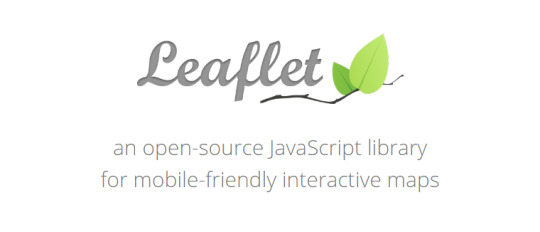
Leaflet
I think Leaflet is the best open source library for adding mobile-friendly interactive maps to your application.
Its small size (39kB) makes it a great alternative to consider over other map libraries. With cross-platform efficiency and a well-documented API, it has everything you need to make you fall in love.
Here is some sample code that creates a Leaflet map:
var map = new L.Map("map", { center: new L.LatLng(40.7401, -73.9891), zoom: 12, layers: new L.TileLayer("https://tile.openstreetmap.org/{z}/{x}/{y}.png") });
In Leaflet, we need to provide a tile layer since there isn't one by default. But that also means that can choose from a wide range of layers both free and premium. You can explore various free tile layers here.
Read the Docs or follow the Tutorials to learn more.
fullPage.js
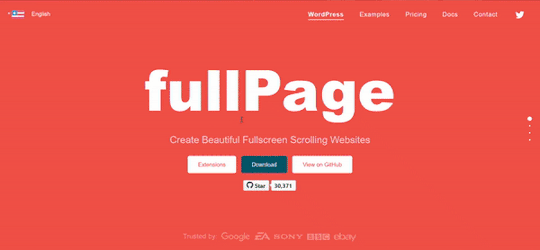
This open-source library helps you create full-screen scrolling websites as you can see in the above GIF. It's easy to use and has many options to customize, so it's no surprise it is used by thousands of developers and has over 30k stars on GitHub.
Here is a Codepen demo that you can play with:
You can even use it with popular frameworks such as:
react-fullpage
vue-fullpage
angular-fullpage
I came across this library about a year ago and since then it has become one of my favorites. This is one of the few libraries that you can use in almost every project. If you haven't already started using it then just try it, you will not be disappointed.
anime.js
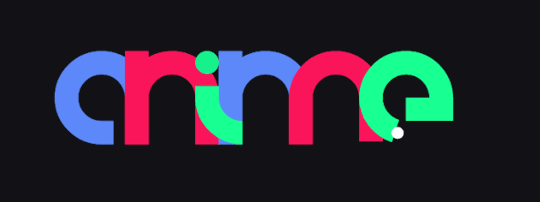
anime.js
One of the best animation libraries out there, Anime.js is flexible and simple to use. It is the perfect tool to help you add some really cool animation to your project.
Anime.js works well with CSS properties, SVG, DOM attributes, and JavaScript Objects and can be easily integrated into your applications.
As a developer it's important to have a good portfolio. The first impression people have of your portfolio helps decide whether they will hire you or not. And what better tool than this library to bring life to your portfolio. It will not only enhance your website but will help showcase actual skills.
Check out this Codepen to learn more:
You can also take a look at all the other cool projects on Codepen or Read the Docs here.
Screenfull.js

screenfull.js
I came across this library while searching for a way to implement a full-screen feature in my project.
If you also want to have a full-screen feature, I would recommend using this library instead of Fullscreen API because of its cross-browser efficiency (although it is built on top of that).
It is so small that you won't even notice it – just about 0.7kB gzipped.
Try the Demo or read the Docs to learn more.
Moment.js

Moment.js
Working with date and time can be a huge pain, especially with API calls, different Time Zones, local languages, and so on. Moment.js can help you solve all those issues whether it is manipulating, validating, parsing, or formatting dates or time.
There are so many cool methods that are really useful for your projects. For example, I used the .fromNow() method in one of my blog projects to show the time the article was published.
const moment = require('moment'); relativeTimeOfPost = moment([2019, 07, 13]).fromNow(); // a year ago
Although I don't use it very often, I am a fan of its support for internationalization. For example, we can customize the above result using the .locale() method.
// French moment.locale('fr'); relativeTimeOfPostInFrench = moment([2019, 07, 13]).fromNow(); //il y a un an // Spanish moment.locale('es'); relativeTimeOfPostInSpanish = moment([2019, 07, 13]).fromNow(); //hace un año

Moment.js Homepage
Read the Docs here.
Hammer.js
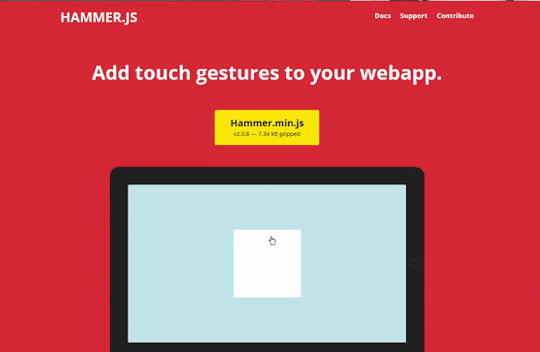
Hammer.js is a lightweight JavaScript library that lets you add multi-touch gestures to your Web Apps.
I would recommend this library to add some fun to your components. Here is an example to play with. Just run the pen and tap or click on the grey div.
It can recognize gestures made by touch, mouse and pointerEvents. For jQuery users I would recommend using the jQuery plugin.
$(element).hammer(options).bind("pan", myPanHandler);
Read the Docs here.
Masonry
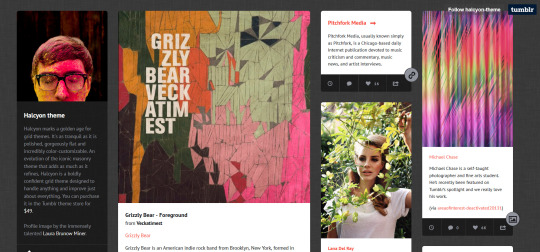
Masonry
Masonry is a JavaScript grid layout library. It is super awesome and I use it for many of my projects. It can take your simple grid elements and place them based on the available vertical space, sort of like how contractors fit stones or blocks into a wall.
You can use this library to show your projects in a different light. Use it with cards, images, modals, and so on.
Here is a simple example to show you the magic in action. Well, not magic exactly, but how the layout changes when you zoom in on the web page.
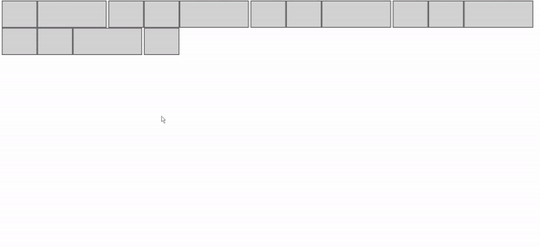
And here is the code for the above:
var elem = document.querySelector('.grid'); var msnry = new Masonry( elem, { itemSelector: '.grid-item', columnWidth: 400 }); var msnry = new Masonry( '.grid');
Here is a cool demo on Codepen:
Check out these Projects
https://halcyon-theme.tumblr.com/
https://tympanus.net/Development/GridLoadingEffects/index.html
https://www.erikjo.com/work
D3.js
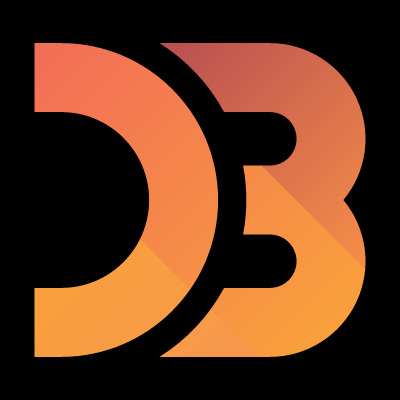
If you are a data-obsessed developer then this library is for you. I have yet to find a library that manipulates data as efficiently and beautifully as D3. With over 92k stars on GitHub, D3 is the favorite data visualization library of many developers.
I recently used D3 to visualize COVID-19 data with React and the Johns Hopkins CSSE Data Repository on GitHub. It I was a really interesting project, and if you are thinking of doing something similar, I would suggest giving D3.js a try.
Read more about it here.
slick
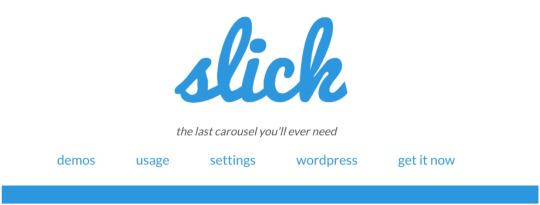
slick
Slick is fully responsive, swipe-enabled, infinite looping, and more. As mentioned on the homepage it truly is the last carousel you'll ever need.
I have been using this library for quite a while, and it has saved me so much time. With just a few lines of code, you can add so many features to your carousel.
$('.autoplay').slick({ slidesToShow: 3, slidesToScroll: 1, autoplay: true, autoplaySpeed: 2000, });

Autoplay
Check out the demos here.
Popper.js
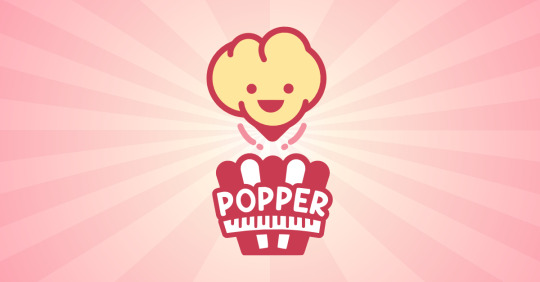
Popper.js
Popper.js is a lightweight ~3 kB JavaScript library with zero dependencies that provides a reliable and extensible positioning engine you can use to ensure all your popper elements are positioned in the right place.
It may not seem important to spend time configuring popper elements, but these little things are what make you stand out as a developer. And with such small size it doesn't take up much space.
Read the Docs here.
Conclusion
As a developer, having and using the right JavaScript libraries is important. It will make you more productive and will make development much easier and faster. In the end, it is up to you which library to prefer based on your needs.
These are 10 JavaScript libraries that you can try and start using in your projects today. What other cool JavaScript libraries you use? Would you like another article like this? Tweet and let me know.
0 notes
Text
7 Best Material Design UI Component Libraries
Material design is a popular visual design system created by Google. It aims to enable designers and developers to create applications that have a unified look on all platforms. Apps that follow material design principles look beautiful and professional on all operating systems and devices. Google’s official material design toolkit supplies you with many assets such as guidelines, components, color palettes, themes, and icons.
However, that’s just the beginning. As material design is an open-source project, third-party developers have also created their own tools following material design principles. In this article, we have collected the best material design UI component libraries that can help you a lot in your next web or mobile app project.
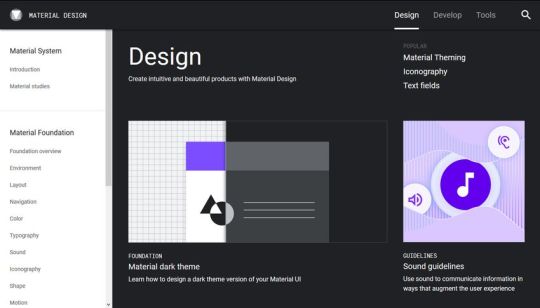
Google’s material design guidelines at Material.io
Material Design Principles
Before getting started with the best material design UI component libraries, let’s have a quick glance at the most important material design principles. They are as follows:
material color palettes typically use a primary and a secondary color,
colors need to indicate the state of components and the relationship between them,
text and icons should meet legibility standards,
motion on the screen always needs to have a meaning,
components should be reusable,
icons should have clean folds and crisp edges,
and many others.
Google made a thorough research to create the material design system and it takes some time to go through the guidelines. And, this is where the best material design UI component libraries can help you a lot. If you find one you like, you don’t have to be a material design expert to create apps that follow Google’s material guidelines.
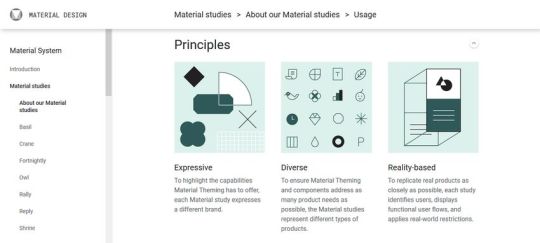
Sample from Google’s material design guidelines
The Best Material Design UI Component Libraries
Now, let’s see the best material design UI component libraries. Although you can use them for regular web development, too, they fit espcially well with Web Components and component-based JavaScript libraries such as React, Vue, Angular, and others.
1. Materialize
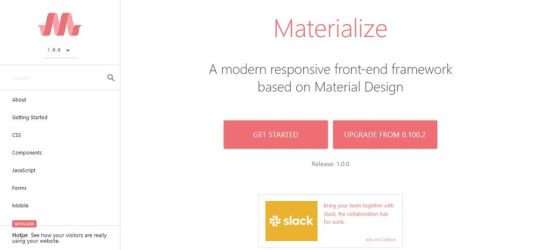
Materialize is a responsive CSS framework that follows the principles of material design. It provides you with multiple ready-to-use components such as badges, buttons, breadcrumbs, cards, icons, navigation bars, and more. Besides elements typical to websites, Materialize also includes mobile app components such as a cool drag-out menu and unobtrusive mobile alerts.
All Materialize components come with code examples you only need to add to your HTML page. Besides HTML and CSS components, you also get access to a number of customizable JavaScript elements such as a carousel, modals, parallax effects, and others. The team behind Materialize also offers themes that have been created with the component library, however they charge $19.00 – $49.00 per theme (or you can get the whole set for $59.99).
2. Material Design for Bootstrap
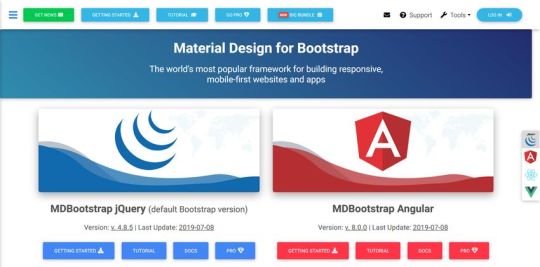
Material Design for Bootstrap is a versatile component library that allows you to build responsive, mobile-first websites and applications. It has been created for the Bootstrap 4 framework to help you use both front-end technologies at the same time. The default config uses jQuery for interactivity, however, the library also has setups for the three most popular JS frameworks: Angular, React, and Vue.
It has both a free and premium version. You can download the free material UI kit from GitHub. Currently, it includes 400+ material UI elements, 600+ material icons, 74 CSS animations, tutorials, and pre-made templates. Although the free library is more than enough for most apps, the pro version contains 4500+ premium components, 50+ premium sections, plugins, and JS modularity, too.
3. Material UI (for React)
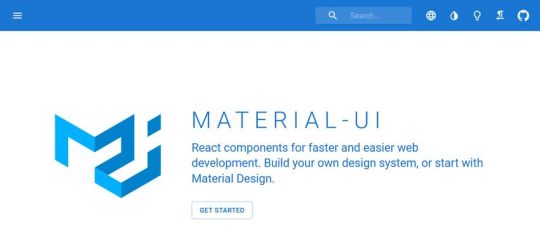
Material UI is a popular UI component library for the React framework. If you want to create any kind of React app with a material look and feel, you need not go further. The components of Material UI work out of the box, they don’t require any additional configuration. The library includes layout components, all kinds of input elements, navigation bars, surfaces, utilities, and more. For the full list of components, take a look at the documentation.
Besides having access to multiple pre-designed components, Material UI also provides you with an extensive Component API. It lets you customize all the components with the help of props and CSS customization points. Material UI’s docs are really good and easy-to-follow, with a lot of examples, code snippets, and demos, so you can quickly get started with prototyping.
4. Vue Material
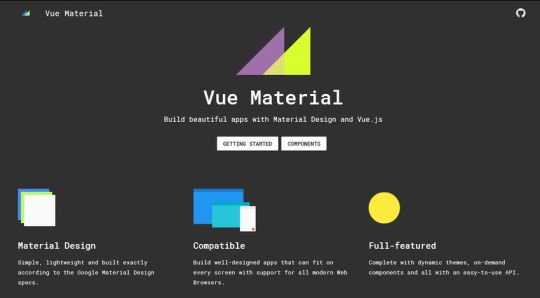
Vue Material is a lightweight material design UI component library for the Vue.js framework. Its creators take pride in having built all the components exactly according to Google’s material design specifications. Vue Material comes with tons of pre-designed UI elements such as avatars, buttons, cards, dialogs, forms, icons, lists, toolbars, and many more.
As Vue Material is pretty well-documented, it’s easy to get started with it if you worked with HTML, CSS, and Vue before. Each component is published within a live sandbox so that you can change the code online and see the results in real-time. Vue Material is a free UI component library that comes with two themes: Vue Material Dashboard Free including 16 components and the full-featured Vue Material Dashboard Pro for $59.00.
5. Angular Material
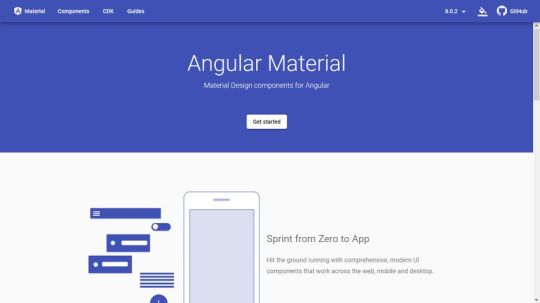
If you are on the look for a material design UI component library for your Angular application, Angular Material can be a good solution for you. It has been created by Google for the Angular 2 framework and it’s still under active development. Besides multiple UI components, Angular Material also includes the Angular Component Development Kit (CDK). Angular CDK is a toolkit that implements common interaction patterns such as accessibility, bi-directionality, drag-and-drop functionality, scrolling, and others.
Angular Material allows you to quickly prototype the user interface of any Angular application by providing you with professionally designed components created by Google. The components are categorized into six groups:
form controls,
navigation,
layout,
buttons & indicators,
popups & modals,
and data table for tabular data.
The library also comes with detailed guides that explain everything you need to know about building UIs with Angular Material.
6. MUI CSS

MUI CSS is a lightweight material design UI component library that includes the most important components you need in a website or application. You only need to add a minified CSS (6.6 kbyte) and JavaScript (5.4 kybte) file to your HTML page. As MUI CSS doesn’t have any external dependencies, it’s easy to set it up, even for beginners.
Besides components written in regular CSS and JS, MUI CSS has ready-to-use UI elements for React and Angular apps. The MUI CSS team has also begun to develop the beta version of a Web Components library, currently with three types of components: a HTML boilerplate, buttons, and forms. In addition, MUI CSS has a cool email UI library, too, with which you can create email templates that follow the material design guidelines.
7. Material Components for the Web
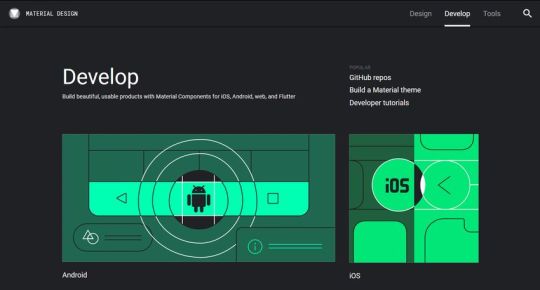
Material Components for the Web is the successor of Material Design Lite (MDL), both created by Google’s in-house team. Google’s documention on GitHub even refers the Material Components for the Web library as MDL v2. So, if you were thinking about using MDL for your project, use this library instead, as MDL vs1 is already in limited support mode.
You can find Google’s Material Components on the same material.io website where Google hosts its material design guidelines mentioned above in the article. You get access to pre-designed material UI components for four platforms:
Android,
iOS,
web,
and Flutter.
The web library provides you with a wide range of UI components such as buttons, cards, grids, surfaces, menus, tabs, and many others. If you want to create a web or mobile app that looks like Google’s own applications, the Material Components for the Web library can be the best solution for you.
Conclusion
Material design can give a professional look and feel to any web or mobile application. It’s especially a good choice if you want to build apps for the same brand for different platforms.
Creating a good-looking UI can be quite a challenge. With the best material design UI component libraries, you can follow Google’s material design guidelines without being an experienced designer.
If you are a programmer who usually works with back-end languages but want to know more about how to use UI frameworks, check out or backend developer’s guide to UI design, too.
This post comes from Digital Marketing Warrington
0 notes
Text
Best Material Design UI Component Libraries for Your Next Project
Material design is a popular visual design system created by Google. It aims to enable designers and developers to create applications that have a unified look on all platforms. Apps that follow material design principles look beautiful and professional on all operating systems and devices. Google’s official material design toolkit supplies you with many assets such as guidelines, components, color palettes, themes, and icons.
However, that’s just the beginning. As material design is an open-source project, third-party developers have also created their own tools following material design principles. In this article, we have collected the best material design UI component libraries that can help you a lot in your next web or mobile app project.
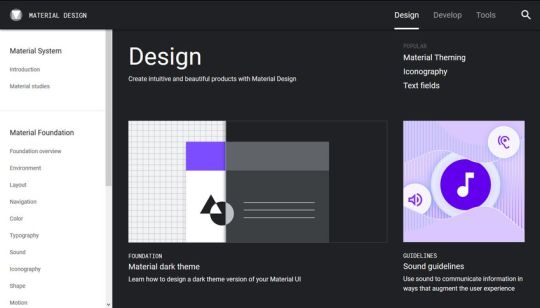
Google’s material design guidelines at Material.io
Material Design Principles
Before getting started with the best material design UI component libraries, let’s have a quick glance at the most important material design principles. They are as follows:
material color palettes typically use a primary and a secondary color,
colors need to indicate the state of components and the relationship between them,
text and icons should meet legibility standards,
motion on the screen always needs to have a meaning,
components should be reusable,
icons should have clean folds and crisp edges,
and many others.
Google made a thorough research to create the material design system and it takes some time to go through the guidelines. And, this is where the best material design UI component libraries can help you a lot. If you find one you like, you don’t have to be a material design expert to create apps that follow Google’s material guidelines.
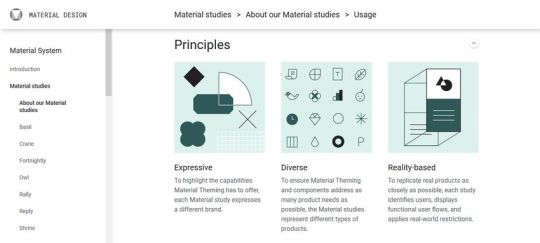
Sample from Google’s material design guidelines
The Best Material Design UI Component Libraries
Now, let’s see the best material design UI component libraries. Although you can use them for regular web development, too, they fit espcially well with Web Components and component-based JavaScript libraries such as React, Vue, Angular, and others.
1. Materialize
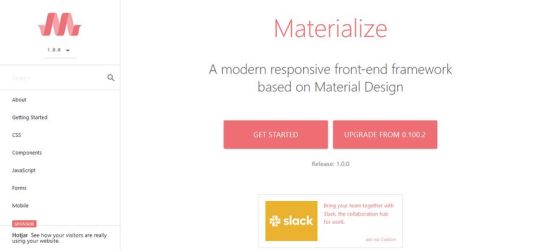
Materialize is a responsive CSS framework that follows the principles of material design. It provides you with multiple ready-to-use components such as badges, buttons, breadcrumbs, cards, icons, navigation bars, and more. Besides elements typical to websites, Materialize also includes mobile app components such as a cool drag-out menu and unobtrusive mobile alerts.
All Materialize components come with code examples you only need to add to your HTML page. Besides HTML and CSS components, you also get access to a number of customizable JavaScript elements such as a carousel, modals, parallax effects, and others. The team behind Materialize also offers themes that have been created with the component library, however they charge $19.00 – $49.00 per theme (or you can get the whole set for $59.99).
2. Material Design for Bootstrap
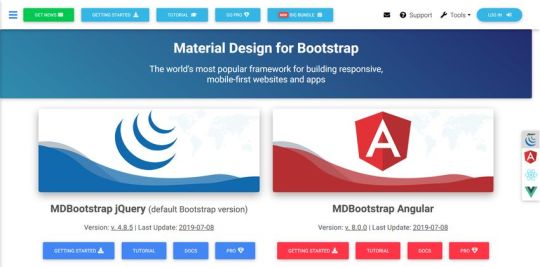
Material Design for Bootstrap is a versatile component library that allows you to build responsive, mobile-first websites and applications. It has been created for the Bootstrap 4 framework to help you use both front-end technologies at the same time. The default config uses jQuery for interactivity, however, the library also has setups for the three most popular JS frameworks: Angular, React, and Vue.
It has both a free and premium version. You can download the free material UI kit from GitHub. Currently, it includes 400+ material UI elements, 600+ material icons, 74 CSS animations, tutorials, and pre-made templates. Although the free library is more than enough for most apps, the pro version contains 4500+ premium components, 50+ premium sections, plugins, and JS modularity, too.
3. Material UI (for React)
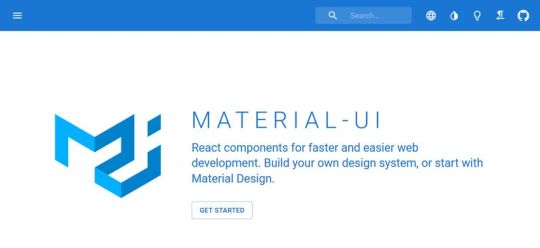
Material UI is a popular UI component library for the React framework. If you want to create any kind of React app with a material look and feel, you need not go further. The components of Material UI work out of the box, they don’t require any additional configuration. The library includes layout components, all kinds of input elements, navigation bars, surfaces, utilities, and more. For the full list of components, take a look at the documentation.
Besides having access to multiple pre-designed components, Material UI also provides you with an extensive Component API. It lets you customize all the components with the help of props and CSS customization points. Material UI’s docs are really good and easy-to-follow, with a lot of examples, code snippets, and demos, so you can quickly get started with prototyping.
4. Vue Material
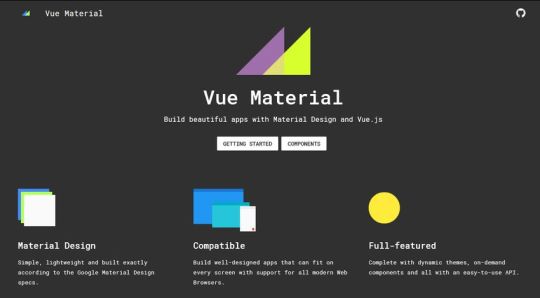
Vue Material is a lightweight material design UI component library for the Vue.js framework. Its creators take pride in having built all the components exactly according to Google’s material design specifications. Vue Material comes with tons of pre-designed UI elements such as avatars, buttons, cards, dialogs, forms, icons, lists, toolbars, and many more.
As Vue Material is pretty well-documented, it’s easy to get started with it if you worked with HTML, CSS, and Vue before. Each component is published within a live sandbox so that you can change the code online and see the results in real-time. Vue Material is a free UI component library that comes with two themes: Vue Material Dashboard Free including 16 components and the full-featured Vue Material Dashboard Pro for $59.00.
5. Angular Material
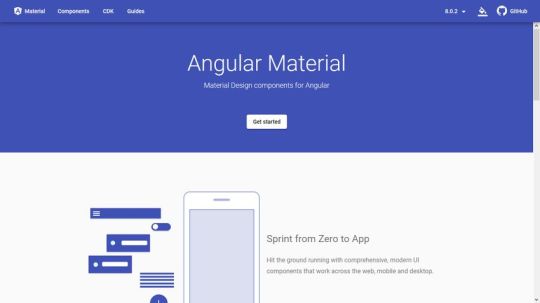
If you are on the look for a material design UI component library for your Angular application, Angular Material can be a good solution for you. It has been created by Google for the Angular 2 framework and it’s still under active development. Besides multiple UI components, Angular Material also includes the Angular Component Development Kit (CDK). Angular CDK is a toolkit that implements common interaction patterns such as accessibility, bi-directionality, drag-and-drop functionality, scrolling, and others.
Angular Material allows you to quickly prototype the user interface of any Angular application by providing you with professionally designed components created by Google. The components are categorized into six groups:
form controls,
navigation,
layout,
buttons & indicators,
popups & modals,
and data table for tabular data.
The library also comes with detailed guides that explain everything you need to know about building UIs with Angular Material.
6. MUI CSS

MUI CSS is a lightweight material design UI component library that includes the most important components you need in a website or application. You only need to add a minified CSS (6.6 kbyte) and JavaScript (5.4 kybte) file to your HTML page. As MUI CSS doesn’t have any external dependencies, it’s easy to set it up, even for beginners.
Besides components written in regular CSS and JS, MUI CSS has ready-to-use UI elements for React and Angular apps. The MUI CSS team has also begun to develop the beta version of a Web Components library, currently with three types of components: a HTML boilerplate, buttons, and forms. In addition, MUI CSS has a cool email UI library, too, with which you can create email templates that follow the material design guidelines.
7. Material Components for the Web
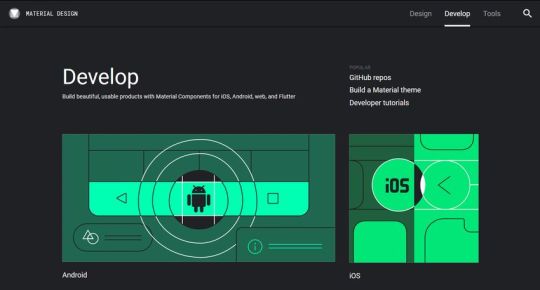
Material Components for the Web is the successor of Material Design Lite (MDL), both created by Google’s in-house team. Google’s documention on GitHub even refers the Material Components for the Web library as MDL v2. So, if you were thinking about using MDL for your project, use this library instead, as MDL vs1 is already in limited support mode.
You can find Google’s Material Components on the same material.io website where Google hosts its material design guidelines mentioned above in the article. You get access to pre-designed material UI components for four platforms:
Android,
iOS,
web,
and Flutter.
The web library provides you with a wide range of UI components such as buttons, cards, grids, surfaces, menus, tabs, and many others. If you want to create a web or mobile app that looks like Google’s own applications, the Material Components for the Web library can be the best solution for you.
Conclusion
Material design can give a professional look and feel to any web or mobile application. It’s especially a good choice if you want to build apps for the same brand for different platforms.
Creating a good-looking UI can be quite a challenge. With the best material design UI component libraries, you can follow Google’s material design guidelines without being an experienced designer.
If you are a programmer who usually works with back-end languages but want to know more about how to use UI frameworks, check out or backend developer’s guide to UI design, too.
Best Material Design UI Component Libraries for Your Next Project published first on http://7elementswd.tumblr.com/
0 notes
Text
Considerations for Making a CSS Framework
Around eight months ago, I started building a framework which would eventually go on to become Halfmoon. I made a post on this very website announcing the launch of the very first version. Halfmoon has been billed as a Bootstrap alternative with a built-in dark mode feature, that is especially good when it comes to building dashboards and tools. All of this still applies to the framework.
However, today I would like to talk about an area of the framework that is a bit understated. I believe our industry as a whole seriously underestimates the value of customization and user personalization, i.e. users being able to set their own design preferences. Chris has written before about knowing who a design system is made for, pointing out a spectrum of flexibility depending on who a system is meant to help.
But it’s more than design systems. Let’s talk about how Halfmoon addresses these issues because they’re important considerations for knowing which framework works best for your specific needs.
Dashboard built using Halfmoon
Who is Halfmoon for?
Before diving in, let’s address an important question: Is Halfmoon the right framework for you? Here’s a list of questions to help you answer that:
Are you building a dashboard, tool, or even a documentation website? Halfmoon has many unique components and features that are specific to these use cases.
Are you familiar with Bootstrap’s class names, but wish that the design was a bit more premium-looking?
Does your users want or expect a dark mode on your website?
Do you dislike dependencies? Halfmoon does not use jQuery, and also has no build process involving CSS preprocessors. Everything is pure, vanilla CSS and JavaScript.
Are you tired of dealing with complex build systems and front-end tooling? This ties in to the previous point. Personally, I find it difficult to deal with front-end tooling and build processes. As mentioned above, Halfmoon has no build process, so you just pull in the files (local, CDN, or npm), and start building.
If you answered yes to any (or all) of these questions, you should probably give Halfmoon a try. It is important to note however, that Halfmoon is not a UI component library for React/Vue/Angular, so you shouldn’t go into it expecting that. Moreover, if you are more fond of purely utility driven development, then Tailwind CSS is a better option for you. When it comes to CSS utilities, Halfmoon takes a middle of the road approach – there are utilities plus semantic classes for common components.
Using CSS custom properties
First, let’s get the easy stuff out of the way. CSS custom properties are incredible, and I expect them to completely replace preprocessor variables in the future. Browser support is already at a solid ~96%, and with Internet Explorer being phased out by Microsoft, they are expected to become a standard feature.
Halfmoon is built entirely using CSS variables because they provide a huge degree of customization. Now, you might immediately think that all this means is that there are a few custom properties for colors sprinkled in there, but it’s more than that. In fact, there are over 1,500 global variables in Halfmoon. Almost everything can be customized by overriding a property. Here’s a nifty example from the docs:
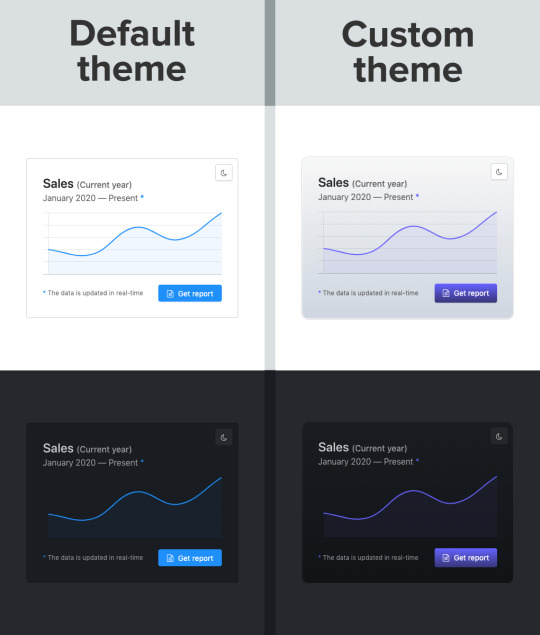
Swapping out a few custom property values opens up a ton of possibilities in Halfmoon, whether it’s theming things for a brand, or tweaking the UI to get just the right look.
That’s what we’re talking about here when it comes to customization: does the system still stand up and work well if the person using it overrides anything. I have written extensively about this (and much more) in the official Halfmoon docs page.
Variables aren’t a new concept to frameworks. Many frameworks actually use Sass or Less variables and have done so for quite a while. That’s still a good and effective way to establish a customizable experience. But at the same time, those will lock into a preprocessor (which, again, doesn’t have to be a bad thing). By relying instead on CSS custom properties — and variable-izing all the things — we are relying on native CSS, and that doesn’t require any sort of build dependency. So, not only can custom properties make it easier to customize a framework, but they are much more flexible in terms of the tech stack being used.
There is a balance to be had. I know I suggested creating variables for everything, but it can be equally tough to manage and maintain scores and scores of variables (just like anything else in the codebase). So, lean heavily on variables to make a framework or design system more flexible, but also be mindful of how much flexibility you need to provide and whether adding another variable is part of that scope.
Deciding what components to include
When it comes to building a CSS framework, deciding what components to include is a big part of that ordeal. Of course, for a developer working on a passion project, you want to include everything. But that is simply not feasible, so a few decisions were made on my part.
As of right now, Halfmoon has most of the components you can find in similar frameworks such as Bootstrap or Bulma. These frameworks are great and widely used, so they are a good frame of reference. However, as I have mentioned already, a unique thing about Halfmoon is the focus on building tools and dashboards on the web. This niche, if you could call it that, has led me to build some unique components and features:
5 different types of sidebars, with built-in toggle and overlay handlers. Sidebars are very important for most dashboards and tools (and a pain to get right), so this was a no brainer.
2 different types of navbars. There is one that sticks to the bottom of the page, which can be used to great effect for action buttons. Think about the actions that pop up when you select items on data-table. You could place those action buttons here.
Omni-directional dropdowns (with 12 different placements, 3 for each direction).
Beautiful form components.
Built-in keyboard shortcut system, with an easy way to declare new ones for your tool.
Tons of utilities. Of course, this is not comparable to Tailwind CSS, but Halfmoon has enough responsive utility classes to handle a lot of use cases right out of the box.
Moreover, the built-in dark mode, huge customizability, and the standard look and feel to the components, should all work together to make Halfmoon a great tool for building web tools and dashboards. And I am hopefully nowhere close to being done! The next updates will bring in a form validator (demo video), more form components, multi-select component, date and time picker, data-table component, etc.
So what is exactly missing from Halfmoon? Well the most obvious ones are tabs, list group, and spinners. But all of these are planned to be added in v1.2.0, which is the next update. There are also other missing components such as carousels, tree navigation, avatars, etc, which are slightly out of scope.
Providing user preferences
Giving end users the ability to set their preferences is often overlooked by frameworks. Things like setting the font size of an article, or whether to use a dark or light theme. In some ways, it’s sort of funny, because the web is catching up to what operating systems have allowed users to do for decades.
Here are some examples of user personalization on the web:
Being able to select your preferred color mode. And, even better, the website automatically saves and respects your preference when the page is loaded. Or better yet, looking at your operating system preferences and automatically accommodating them.
Setting the default size of elements. Especially font size. A small font might look good in a design, but allowing users to set their ideal font size makes the content actually readable. Technically, every modern browser has an option to zoom into content, but that is often unwieldy, and does not actually save your settings.
Setting the compactness of elements. For example, some people prefer large padding with rounded corners, while others find it a waste of space, instead preferring a tighter UI. Sort of like how Gmail lets you decide whether you want a lot of breathing room in your inbox or make it as small and tight as possible to see more content.
Setting the primary color on the website. While this is entirely cosmetic, it is still charming to be able to set your favorite color on every button and link on a website.
Enabling a high contrast mode. Someone pointed this out to me on GitHub. Apparently, many (and I mean many) CSS frameworks often fail the minimum contrast recommended between foreground and background colors on common elements, such as buttons. That list includes Halfmoon. This is often a tradeoff, because overly contrastive elements often look worse (purely in terms of aesthetic). User personalization can allow you to turn on a high contrast mode, if you have difficulty with the default contrast.
Allowing for user personalizations can be really difficult to pull off — especially for a framework — because that would could mean swapping out huge parts of CSS to accommodate the different personalization settings and combinations. However, with a framework like Halfmoon (i.e. built entirely using CSS variables), this becomes trivial as CSS variables can be set and changed on run-time using JavaScript, like so:
// Get the <html> tag (for reading and setting variables in global scope) var myElement = document.documentElement; // Read CSS variable getComputedStyle(myElement).getPropertyValue("--variable-name"); // Set CSS variable myElement.style.setProperty("--variable-name", "value");
Therefore, user personalization can be implemented using Halfmoon in the following way:
The user sets a preference. That basically means a variable value gets changed. The variable is set with JavaScript (as shown above), and the new value is stored in a cookie or local storage.
When the user comes back to the website, their preferences are retrieved and set using JavaScript (again, as shown above) once the page is loaded.
Here are visual examples to really hammer the point home.
Setting and saving the default font size
In the example above, whenever the range slider is changed, the variable --base-font-size is updated to the slider’s value. This is great for people who prefer larger text. As explained in the previous section, this new value can be saved in a cookie or local storage, and the next time the user visits the website, the user preference can be set on page load.
Setting the compactness of content

Because there are CSS custom properties used as utilities, like spacing and borders, we can remove or override them easily to create a more compact or expanded component layout.
Only two variables are updated in this example to go from an expanded view to a compact one:
--content-and-card-spacing changed from 3rem (30px) to 2rem (20px).
--card-border-radius changed from 0.4rem (4px) to 0.2rem (2px).
For a real life scenario, you could have a dropdown that asks the user whether they prefer their content to be Default or Compact, and choosing one would obviously set the above CSS variables to theme the site. Once again, this could be saved and set on page load when the user visits the website on their next session.
Wait, but why?
Even with all the examples I have shown so far, you may still be asking why is this actually necessary. The answer is really simple: one size does not fit all. In my estimate, around half of the population prefers a dark UI, while the other half prefers light. Similarly, people have wild variations about the things they like when it comes to design. User personalization is a form of improving the UX, because it lets the user choose what they prefer. This may not be so important on a landing page, but when it comes to a tool or dashboard (that one has to use for a long time to get something done), having a UI that can be personalized is a boon to productivity. And knowing that is what Halfmoon is designed to do makes it ideal for these types of use cases.
Moreover, you know how people often complain that websites made with a certain framework (eg Bootstrap) all look the same? This is a step toward making sure that websites built with Halfmoon will always look distinct, so that the focus is on the website and content itself, and not on the framework that was used to build it.
Again, I am not saying that everything should be allowed to be personalized. But knowing who the framework is for and what it is designed to do helps make it clear what should be personalized.
Looking ahead
I strongly feel that flexibility for customization and accounting for user preferences are often overlooked on the web, especially in the framework landscape. That’s what I’m trying to address with Halfmoon.
In the future, I want to make it a lot easier for developers to implement user preferences, and also promote diversity of design with new templates and themes. That said, here are some things on the horizon for Halfmoon:
A form validator (demo video)
New components, including range sliders, tabs and spinners
High contrast mode user preference
Multi-select component (like Select2, only without jQuery)
A date and time picker
A data-table component
A GUI-based form builder
More themes and templates
You can, of course, learn more about Halfmoon in the documentation website, and if you want to follow the project, you can give it a star on GitHub.
The post Considerations for Making a CSS Framework appeared first on CSS-Tricks.
You can support CSS-Tricks by being an MVP Supporter.
Considerations for Making a CSS Framework published first on https://deskbysnafu.tumblr.com/
0 notes
Text
Top 5 trending front end technologies should be used in 2020 and beyond
When it comes to front-end technologies, these are basically the types of technologies that developers leverage to craft user interface for websites, mobile apps, and web apps. As the name suggests, front-end technologies help developers create everything of software that appears in front of users. This is the reason why front-end technologies define the beauty and appearance of your website and applications, and thus, defines its market success. Be it drawing the attention of users to access your software or encouraging them to buy your offerings, these technologies play a vital role in this arena. So, while developing for your website or app for your business, you need to focus on the latest front-end technologies. And hire a website design company who is versed in the front-end technologies and leverage these by harnessing their unmatched potential. Like other technologies, the trend of using front-end technologies also changes yearly. Before we discuss here certain top-notch technologies that are trending in the year 2020, we are going to discuss here its various advantages.
Advantages of Leveraging Front-End Technologies for Web and App Development
Let’s discuss here some reasons why it is necessary for you to leverage these technologies for web and application development.
It automates the task
It gives developers the liberty to use elements and templates
It facilitates debugging and code optimization
Developers can improve their efficiency and productivity
It eases out the complications involved in the development process
Front-end Technologies that are in Trend in 2020
Let’s discuss here several front-end technologies that developers leverage to a wider extent to code a variety of websites and applications.
Vue.js
While talking about some trending front-end technologies in the year 2020, it’s good to start from none other than Vue.js, a popular JavaScript library. No matter what type of user interface you wish to have for your website or app, your developers can easily create the same with the use of this technology. The other great advantage of Vue.js is that its core library generally focuses on the view layer exclusively. So, your web designing company can easily make it possible to integrate the same with various other tools, libraries, etc. to get the desired outcomes. If you are looking for the right option to create a SPA (Single Page Application), Vue.js can be apt for you. You can make it possible by merging with some other libraries and tools. The growing popularity of Vue.js made it the stiff competitor of other technologies such as React and Angular.
Advantages
It comes with rendering support
One can keep eyes on the development process in real-time
It comes with a lower entrance threshold. So, you can grasp the Vue.js quickly compared to Angular
It can be easily integrated with HTML templates
React
React is another front-end technology that is in trend in the year 2020. As an open-source technology, React, a front-end library, was introduced in the year 2013. The most important thing about React is that it gets support from social media giant Facebook. The technology possesses the ability to break the code into two different components, which enable developers to get the advantage of code reusability and also debugging quickly. The software developed using React is responsive and good for search engine optimization.
Advantages
It brings the possibility for writing components
Improves productivity and maintenance
Fast rendering
Stable code
SEO-friendly
Angular
Angular is another technology that managed to retain its position in the list of some of the front-end technologies that are in trend in the year 2020. As the most reliable JavaScript front-end technology, Angular was launched in the year 2009 and witnessed its vast adoption among a number of developers for letting them create a wide range of UI designs. Since the inception of Angular, it has become the most preferred choice among developers for letting them avail of wide flexibility while creating a user interface of mobile and web applications. Enjoying vast community support, the front-end technology is maintained by none other than Google and ensures its effectiveness. Angular is famous among developers mainly for being easily readable, constant, and helps developers in creating performance-driven business apps. Another greatest benefit of Angular is that it is based on MVVM architecture, which makes it highly convenient for reflector and also for maintaining code in a proper way. Apart from this, it also gives complete assurance in terms of ease of test, top-quality coding, etc. for having component-based architecture.
Advantages
Vast community support
It facilitates two-ways data binding
It brings the possibility of web development with a mobile-friendly approach
It gets support by Google
Material design support
Flutter
Developed and introduced by Google, Flutter is an emerging open-source technology. It is most popular as a cross-platform development framework user interface development tool. It is useful for developers in creating top-notch and attention-seeking user interfaces for software. Programmed in Dart language, Flutter is the right option to craft a wide variety of UIs for different mobile and web applications. It uses a wide range of widgets when it comes to crafting enticing and also visually appealing user interface. The reason is that widgets are the most crucial part of apps and also front-end technology works effectively in offering full of compatibility. Apart from this, Flutter is also blessed with features like hot reloading, which accelerates the entire process of application development. With the use of this feature, developers can easily implement several changes in coding to apps even without reloading them. It renders amazing performance mainly because of less intervention between platform and app.
Advantages
It lets you implement same business logic and user interface across all the platforms
Minimize coding time
Increase time-to-market
Animated and customized user interface
Bootstrap
Last but not least, Bootstrap is another front-end technology that developers prefer to leverage to a wider extent. When it comes to code mobile-first and responsive websites, Bootstrap emerges as the right option for them. It is basically a combination of HTML, CSS, and JS frameworks. It lets developers use a predefined grid without any hustle. It also reduces their coding effort by minimizing it. Developers leveraging Bootstrap get entitled to availing of various benefits. Take a look at some of them.
Advantages
It minimizes developer’s coding effort for the grid
It is available with the in-built code that tends to resize images automatically no matter what is the current size of the screen.
Another great advantage of Bootstrap is that it consists of a set of components such as progress bars, navigation bars, thumbnails, dropdown, and many more. You will certainly not face any kind of difficulty when it comes to incorporating such important elements in your website pages.
Bootstrap comes with a large number of jQuery plugins that enable developers to create a highly interactive and also quite easy solution for image carousels, transition, etc.
Conclusion
After going through the above discussion, you are expected to have a clear understanding of various trending front-end technologies and their importance. So, while hiring a website and mobile app design company make sure they are blessed with enough expertise to implement these technologies while developing your software.
0 notes
Text
I wanted to share some Front End practice interview questions, after interviewing and finding it nothing like Leetcode via /r/webdev
I wanted to share some Front End practice interview questions, after interviewing and finding it nothing like Leetcode
I recently spent some time preparing for Front End interviews and found the suggested 'Software Engineer' interview prep pretty lacking: the common advice is to spend most of your time grinding Leetcode and, for Front End interviews, get ready for countless trivia-style questions.
After half a dozen interviews with Bay Area companies, I personally experienced just one Leetcode-style algorithmic question (a pretty basic graph question) and zero FE trivia questions.
My interview experience was roughly: 25% culture fit, 25% system design/experience (e.g. discussing a project I worked on and choices I made), and 50% practical Front End coding.
This also matches my experience as an interviewer at my previous company, where we phased out both algorithmic and trivia questions (in favor of practical FE coding) after finding they were poor indicators of future success.
IMPORTANT NOTE: your experience may vary, especially with companies based in other states or countries!
I feel like there's a huge lack of practice questions suited for practical Front End interviews, so I wanted to share a handful of my favorite Front End coding practice questions (with slight variations) that came up for me. But first, a few tips for getting the most out of these practice questions:
Use codepen.io - I was asked to use this in nearly every interview. Get familiar with the environment: shortcuts, layouts, how to add libraries, etc
Read the question prompt, and think about what clarifying questions you might ask in a real interview (e.g. unclear requirements, edge cases you might need to account for)
Run through the question once with a time limit. After completing, review your approach: what went well, did you get stuck on any specific parts, what could be improved, etc
Complete the question and think about how you could refactor it for readability, extensibility, re-usability, and performance
Come back to the question later and try it again, but this time using a different approach. e.g. vanilla JS vs framework, React class components vs hooks
Front End coding practice questions
Data fetching and visualization
Prompt: retrieve a list of numbers from an endpoint, then plot a histogram showing the frequency of each number in the list. The histogram should have appropriately numbered x and y axes
In the example below, the list contained 24 ones, 17 twos, 30 threes, and so on.
https://preview.redd.it/jvxwpf13i3d51.png?width=1684&format=png&auto=webp&s=18a86709d03fa6885a5afddf0b7133d17524f6fe
Time limit: 40 minutes
Hints
There are three main parts to this question: fetching the data, manipulating the data (i.e. into a format that can be visualized as a histogram), and drawing the histogram. Start by considering at a high-level how each of these will work
After fetching the data, you should have an array of numbers. Think about what format you need the data to be in to make it easier to draw the chart
Consider using reduce to convert your list of numbers to an object of { number: frequency of that number }
How are you going to draw the chart? If you decide to use plain HTML with some styling, think about what the HTML structure will look like (e.g. how will you draw the axis, how will you dynamically size the bars, etc)
Possible extensions
Ensure your histogram displays correctly with extremes, e.g. how does it handle very high frequencies of a single number, what about negative numbers?
Use different colors for each bar in the histogram
Add a button to refetch/regenerate the data (the endpoint will return random numbers each time)
On hovering over a bar in the histogram, change the color and show a label above the bar with the precise value
You may notice that the random.org URL takes query parameters that will change the numbers generated: include a form that will dynamically generate the URL to provide a different set of numbers (e.g. more numbers, min/max value)
Image carousel
Prompt: create an image carousel that cycles through images fetched from an endpoint (displaying a new image every 3 seconds), and allows the user to skip to the next/previous image
The example endpoint contains images within the response as follows:
{ data: { children: [ { data: { url_overridden_by_dest: "*.jpg" } }, ... ] } }
Below is a mockup of what the UI should look like (the carousel should be horizontally centered, with at least some top margin):
https://preview.redd.it/48tq1gbbi3d51.png?width=1686&format=png&auto=webp&s=a8addd3473d64361bb1d7d2cd566ee6dd924e3f4
Time limit: 60 minutes
Hints
As with the previous question, start by thinking about what the main parts of this question are and how to tackle them at a high-level: fetching the data, getting the image URLs from the response, displaying an image, automatically cycling through the images, and allowing the user to go forward and back through the images
There are two ways you could start: stub the endpoint and fully build out the component first (e.g. create a static array of image URLs to use for testing), or fetch the data first and then build the component
Make sure that the data fetching and extraction of the image URLs is cleanly separated from the code that displays the interactive carousel component. Ideally, the carousel component itself should just accept an array of image URL strings
Possible extensions
When the user presses next/previous, make sure that the timer resets
After the last image, make sure the image cycles back to the first
Add image selector circles. The highlighted circle should have the same index of the current image, and the user should be able to click on a circle to jump to that image
https://preview.redd.it/7w5jccmdi3d51.png?width=1026&format=png&auto=webp&s=d97550bbb7444a124ce5aaf118c0f16d90cf4469
Allow the user to select from a (static) list of subreddits to change the cycled images
Allow the user to see top images from the day, week, month, year, or all time by dynamically appending a query param to the URL: e.g. https://www.reddit.com/r/aww/top/.json?t=day (or t=week, t=month, t=year, t=all)
Snake game
Prompt: Create a Snake game (example) that meets the following requirements:
15x15 grid
Snake should be controlled with cursor keys (or WASD if you prefer)
Snake should start with a length of 3
One apple at a time should appear in a random position on the grid. When collected, it should increase the score by one, increase the snake length by one, and change to another random position
Display a score for how many apples have been collected
If the snake head collides with the rest of the body, the game should end
If the snake head collides with the borders, the game should end
https://preview.redd.it/v2eqcztfi3d51.png?width=594&format=png&auto=webp&s=3bb3c82528158bde1024cd69a2c18a13e61de3eb
Time limit: 60 minutes
Hints
This is a pretty open-ended question with many different approaches (e.g. HTML canvas, vanilla JS with styled DIVs, framework). Think about the tradeoffs of each, and how you can decouple the model (the game state, logic, and main loop) from the view (how you take that state and render it to the screen)
Begin by thinking about how you will represent the game state
One simple way to represent the game state would be: current apple position as {x,y}, snake body as an array of positions [{x,y},{x,y},...], and score as a number
Build the features very incrementally (planning the order in which you'll tackle them), and test constantly. Start by just getting a single square moving around the grid
Possible extensions
When the game is over, display a game over message with the score and allow the user to press space to restart
As well as the current score, display the player's high score (you could also persist this with localStorage
Before the game starts, display an intro message (e.g. game title, controls, high score) and wait for the player to press a key
Consider ways to increase the difficulty over time (or add selectable difficulty modes): increasing the speed of the snake, adding random obstacles
At this point, you have a pretty complete game: congratulations!
More questions?
I have a bunch more practice questions, but it takes a little time to rewrite them in such a way as to test the same concepts and be of similar scope, while also being different enough from the original question asked (while I didn't sign any NDAs, I have been on the other side of the interviewing fence and it's frustrating when your exact question appears on Glassdoor).
If even a few people find these practice questions helpful, I'll spend some time writing and sharing more. Also, if anyone knows of a good repository of Front End practice questions then please share!
Submitted July 27, 2020 at 09:00AM by jayrobin via reddit https://ift.tt/2BzwQ7P
0 notes